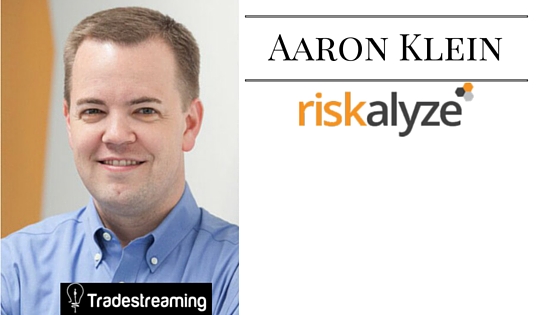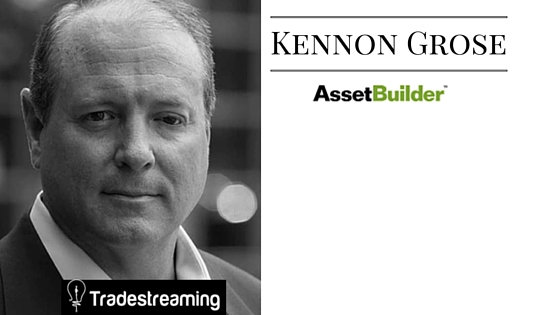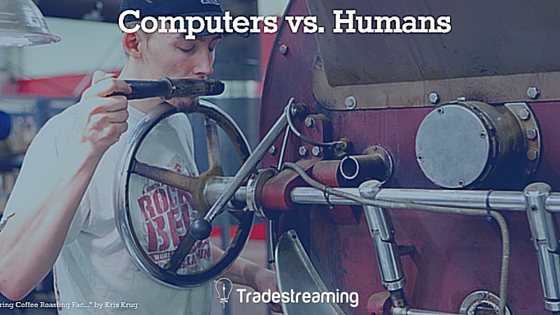Marketplace lending meets retirement investing with Income&
[podcast] How today’s fund managers connect with interested investors — with Peter Hans
Imagine a world where regulation and compliance didn’t rule financial services with an iron fist. Ok, that’s never going to happen but certainly it’s fair to hope for an environment that makes it easier to market investments to high net worth investors. And to some extent, the system is trying to ease up a bit on the regulatory and compliance issues that have rankled the investment industry for decades.

New startup fintech companies may be focused on offering broader reach at a lower price point. But according to our next guest, this is somewhat misplaced. Fees in the industry have typically been high precisely because the cost of doing business is high. Peter Hans is the co-founder and CEO of Harvest Exchange — Peter explains that it’s expensive and long cycle to identify and acquire customers — especially as trends on the investment side encourage deeper diligence and more access to more information.
Harvest enables the conversations institutional investors want to have with their clients and makes them happen by connecting these investors to public and private communities. We’re not talking about Facebook for finance — we’re talking about 7000 top investors and investment firms (funds like 3rd Point and Highland Capital Partners) who are seeking tools to more efficiently communicate with existing and prospective clients and investors.
Peter and I talk about:
- why the asset management industry has been slow to adopt change and new technologies
- how some of the leading firms are beginning to use best practices, tools and techniques pioneered in other industries to better communicate, market, and ultimately, attract more investors and assets to their funds and products
Listen to the FULL episode
MORE RESOURCES
- Harvest Exchange (Peter’s firm)
EVEN MORE RESOURCES
What digital wealth management can learn from successful online brokers with MyVest’s Charlie Haims
Charlie Haims is Vice President of Marketing at MyVest.
What is MyVest?

MyVest is a pioneer in holistic wealth management technology for financial institutions. Our enterprise software platform allows wealth management firms and their advisors to offer holistic, personalized, tax-aware portfolios at scale. Advisors can only offer highly personalized portfolios like this to their best clients on a limited manual basis, but our platform allows advisors to offer best-practice portfolio management to all clients, large and small.
In the beginning, we worked with larger, traditional firms, but more recently, we’ve connected our sophistication in portfolio management to the rise of the digital wealth opportunity and now power one of the leading B2C digital wealth startups. So, we can support all types of advisors serving the entire spectrum from mass market to high net-worth.
What advantage does an advisor have armed with MyVest competing against the robos?
Compared to many robo-offerings, MyVest offers advisors more sophistication, and we offer their firms flexibility in scaling up these offerings across different types of advisors, client segments, and channels, while maintaining centralized control and oversight.
For advisors, they can offer every client a portfolio that is holistic, covering an entire household, personalized to each investor’s unique situation, and tax optimized.
For the firm, they get the flexibility to tailor different levels of control for different advisors based on their experience or their client base – from highly centralized home-office driven models and portfolios to advisor-managed ones, to hybrids in between. The icing on this multi-layered cake is that we ensure every personalized portfolio is being managed per its investment policy statement on a daily basis, which is a big plus for trading, operations and compliance.
Imagine a bank that simultaneously serves mass market, mass affluent and high net worth segments with different wealth management offerings, investment vehicles, pricing, service models and advisor teams for each. Many banks use separate infrastructure for these different programs, but with MyVest, they can bridge these silos and do it all on a single, unified platform. Then we can help connect all of that configuration and sophistication to modern digital tools to help a traditional firm prepare for the future of wealth management.
Who are your customers? What are you hearing from them is their biggest challenge?
We address the needs of enterprise-level wealth management businesses at broker-dealers, RIAs, banks, and other service providers like custodians and turn-key asset management providers (TAMPs).
The biggest challenge we hear from customers is how they can transform their businesses from the old way of delivering wealth management to a new, client-centric approach. These trends include the move from a product- to a client-centric mindset, from performance- to goals-based wealth management, from account-by-account to household-based management, the upcoming DOL fiduciary rule, demographic shifts, and new digital tools.
MyVest helps our customers with this kind of strategic transformation by being more than just a tactical product, but a long-term strategic partner. We work like a consultant with our customers to design new offerings, bridge silos, simplify infrastructure, and prepare for the future. The combination of our portfolio management sophistication and flexible platform I mentioned allows a firm to grow with us over time into a more scalable, profitable business that puts the client first in everything they do.
How do you think the whole excitement around robos plays out?
The good news with the excitement is that it jump-started a new level innovation in wealth management that had stagnated since the dot-com days and has driven more advisors and investors to adopt a more systematic approach to portfolio management.
Recent events demonstrate how this will play out where some startups are pivoting and incumbents are either launching their own, like Schwab and Vanguard, or acquiring, like BlackRock with FutureAdvisor and Northwestern Mutual with LearnVest. I expect we’ll see a lot more retail brokerages and banks invest in digital wealth, plus we’ll see new players like asset managers attempting direct-to-retail distribution, custodians developing these services for independent advisors, and traditional advisors building or partnering to create their own offerings.
Retail client acquisition is expensive for any new offering given the brand and budgets of the incumbent retail investor firms and given history shows that investors stick with who they know and trust. So I think the trick for new offerings to get critical mass in a crowded marketplace is through differentiation by carving out a unique niche in product, service or channel. We’ve seen examples of this from startups that target investor niches, B2B advisor services, small business retirement advice, and many new financial planning and portfolio analysis initiatives.
In your career, you’ve personally been an integral part the industry’s move towards digital delivery of investment services beginning with the online brokers. What challenges did you face with them and do robos face similar/different challenges?
I was part of building one of the first online investing companies, DLJdirect, in the late 1990’s, and then at E*TRADE and Schwab. The focus then was building the tools, data and education to help millions of new self-directed investors evaluate and trade individual securities. As an industry, we accomplished a lot in giving consumers personal control over what was previously an offline investing world controlled by very expensive, opaque, inefficient intermediaries.
Back then, the industry’s key challenge was onboarding and educating a huge wave of brand new active investors overnight, and operations and customer service struggled to keep up with their diverse demands. A related challenge was that many investors did not manage their portfolios in prudent ways over time (By the way, the ‘robos’ are addressing this second problem).
Today, there is again a big onboarding and educational challenge, but in a different way. Instead of a rush to keep up with a huge wave of newly minted active investors, the ‘robos’ big educational hurdle is to first persuade enough investors to adopt a new approach to investing, and then second to keep them engaged on a very long path towards achieving their goals, something traditional advisors do well but may be a challenge for the purely automated robos.
I also want to call out that this ‘robo’ thing is not new. I knew some of the first automated advice launches in the late 1990’s, and like your recent interview with Peter Nesvold at Silver Lane who taught us how we could learn from the history of online banking, we can also learn directly from these early efforts.
Some of them succeeded by being:
- initiatives of large diversified firms, like Amerivest from Ameritrade
- acquired, like Sharebuilder by ING Direct
- diversified into a broad platform, like Foliofn
- backed by patient investors and finding a less competitive niche to maintain independence, like Financial Engines and GuidedChoice
Now, new innovation is building on these early examples. But there is still a huge need to improve the financial outcomes for millions of American families, so there’s still a lot more work for all of us to do in making wealth management more client-centric.
Photo credit: The Nick Page via VisualHunt / CC BY
TipRanks’ Uri Gruenbaum on the need for accountability and transparency in stock market analysis
Uri Gruenbaum is CEO of TipRanks.
What is TipRanks? What was the inspiration behind creating it?
TipRanks analyzes big financial data using proprietary Machine Learning and Natural Language Processing (NLP). Our “Financial Accountability Engine” is a multi-award winning platform that allows investors to evaluate investment advice published online, including ideas from market gurus, sellside analysts, and financial bloggers. At the same time, users can see what the most accurate ones, who’ve outperformed the markets, say about their portfolios. TipRanks has a consumer facing website for retail investors and APIs used by the world’s biggest hedge funds, banks, and online brokers.
The idea started after I followed an investment idea published by a technical analyst in a leading financial news website. The investment lost more than 50% in the following 6 month and i spent 2 days googling everything else that the technical analyst recommended only to find out he was usually wrong. This made me realize that everyone should have a service that helps them distinguish between outperforming and underperforming experts – today, we call it a “Financial Accountability Engine”.
Analysts have a lot of influence on stock price movement but it’s traditionally been hard to tell who’s worth following. How is TipRanks changing the way we analyze expert stock market opinion?
Traditionally, Wall Street relied on analyst ranking services that use metrics unrelated to the analyst’s performance (anywhere from how much the analyst earned to how fast he got back to his costumers). Retail investors had no service at all to evaluate how good an analyst is while many of them lost money following poor advice they came across online. TipRanks changes all that by measuring the actual performance of these analysts and answering the simple question of whether they are good or not.
We see leading websites such as CNBC and others that add the TipRanks star ranking near analysts they quote and we see research firms, analysts, and bloggers placing their TipRanks star ranking on their websites and profile pages as a quality stamp.
Who’s your typical user and how have you attracted him/her to your service?
We serve a variety of investor types. Our website has simple services for the layman investor and more complicated screeners and signals for day traders. We also have an internal quant team that creates investment strategies we license to some of the biggest hedge funds in the world.
Our marketing is mostly focused on content and social media. Since we cover the calls of thousands of analysts and bloggers, we have an “army” of people promoting their own TipRanks profiles around the web. We also enjoy broad media coverage, which can relate to our efforts of bringing accountability into the financial markets. In the near future, we will start focusing on outbound marketing, as well.
How are you monetizing the site? How is freemium working?
TipRanks provides many powerful free features that help the everyday investor with decisions. On top of those features, we offer access to more analytic data and signals based on that data as premium features. We found that freemium was the best business model for our consumer-facing website, as it allows our users to understand the value we bring and the how the premium features will provide additional value.
What should we expect to see in 2016 from TipRanks?
We expect to continue seeing growth both in our consumer website and in our enterprise products. We started licensing an API in early 2014. Our API became an immediate success in Israel, where we started working with all the big banks and brokers and then, in the US. We are now putting efforts to expand our reach to Europe and Asia and expect to see results in 2016 as well. In early 2016, we are also releasing the next generation of a “Smart Dashboard”, allowing users to import existing portfolios and get ongoing insights based on what 50,000 experts are saying or doing – we hope — and believe — it will be a very successful feature.
A screener of screeners, Wootrader is creating affordable predictive analytics models for all kinds of investors
Atanas Stoyanov is the CEO of Wootrader.
What is Wootrader?

Wootrader is the only complete system that uses technical analysis, company fundamentals, analysts estimates, options volatility, guru strategies, stock sentiment and more to generate a ranking for each stock.
What makes Wootrader so radically different is that it adapts to the dynamically changing stock markets by using weighted predictive analytics models that have been used for years in other industries, such as military, to predict the trajectories of missiles, business modeling to predict sales of new products, or even in city planning. The end-user does not have to manually configure screeners into an investing strategy – Wootrader selects and weights every day the screeners that are outperforming the S&P500 Index in the current market conditions. During some periods we have markets driven by fundamentals, other times by technicals, analysts estimates etc. – this is what Wootrader accounts for.
Do we really need another screener? Don’t most people not understand how to use them effectively? How is it different than other screeners on the market? What’s the use case?
The currently available screeners require a high level of sophistication from end-users. Most screeners focus on technical, fundamentals, or a small combination of the two and the more data points are available, the more complicated those screeners are…to the point of becoming unusable.
By automatically selecting the best performing screeners, Wootrader allows even beginner investors to use advanced data such as options volatility and analytics, social sentiments, and guru strategies,. on top of technical analysis and company fundamentals.
Additionally, Wootrader daily optimizes the models to use only the screeners that are outperforming the S&P500 depending on the current markets, while the other existing screeners are ’static’ – once the user has configured (and eventually backtested) them – they do not change/evolve and at some point in time, when the markets have changed, the screeners/strategies stop performing.
Enough has been said about the abysmal performance of Mutual Funds, and expert money managers using those same kind of screeners and strategies – over 80% are underperforming the markets exactly for using such ’static’ strategies that work only for short periods of time and need to be constantly maintained.
We see the following as use cases for Wootrader:
- A complete beginner can log into Wootrader and start investing within 5 minutes using a basic model that has no timeframe constraints
- More advanced users can use models with specific time/number of stocks constraints. For example, these users would select (using a wizard) the model that works best for a one-month investing period for a portfolio of 10 stocks.
- Professional investors can create custom models from scratch by selecting the data points that they believe are the most relevant and Wootrader, under the hood, will use its predictive analytics engine to automatically assign weights based on the current market performance. For example, a user can select some screeners like the P/E Ratio, MACD, 10 Day Options Volatility and Wootrader automatically assigns a weight to each one of them on a daily basis.
- Financial institutions can integrate the Wootrader models and rankings into their own systems using our REST API
What kind of development went into building a screener of screeners?
Several years went into developing the predictive analytics engine of Wootrader. Currently, our platform is cloud hosted and gets new data every day from Zacks, CSI, Quandl, Orats, PsychSignal, Quantcha and soon, TipRanks (performance weighted analysts ratings and price targets). After the new data is downloaded, Wootrader builds the models and generates the rankings.
My background is in software development and optimization – my previous company (a former Inc 500 firm that I sold in 2007) AutomatedQA/Smartbear.com develops software optimization and test automation tools. Optimizing software and optimizing the stock markets have quite a few surprising similarities.
You’ve integrated your screeners into a few of the online brokers — can you describe how that works from a user’s point of view? Were there technical challenges that you faced?
Actually the brokers are integrated into Wootrader – allowing the user to place trades and retrieve accounts and positions. Wootrader analyzes a user’s existing equity positions and recommends which ones should be sold/bought over the short term. The challenges are mostly due to various implementations of the brokerages APIs, so each integration has to be custom-coded and extensively tested. However there are several new Broker ‘aggregators’ (think of these like portals to other brokers, allowing the use of a unified API to access the different brokers) that we are in the process of integrating – trade.it and tradable.com are two examples.
Another challenge is that not all information is readily available yet through brokerages APIs – for the future, we are working on accessing portfolio transactions such as dividend distributions/reinvestments, interest, splits, and other events like those.
What does 2016 have in store for Wootrader?
The main features coming in 2016 are related to portfolio analysis, as well as tax harvesting and optimizations. We want to make Wootrader a one-stop easy solution for everyday budding investors who desire better-than-market returns while saving on the fees associated with money managers and robo-advisors. We don’t pay our accountants a percentage of our earnings and I have a really hard time accepting fees based on a percentage (small or high) of the assets being managed. We are also constantly adding new great data from various sources.
Photo credit: Dennis Wong / VisualHunt.com / CC BY
How Riskalyze CEO, Aaron Klein is giving investors permission to ignore short-term risk
Riskalyze works with investment advisors on assessing their clients’ true tolerance for risk and aligning their portfolios appropriately. The technology platform works with thousands of advisors to help manage over $120 billion in assets — at its core is its proprietary measure of risk, the Risk Number.
Riskalyze founder and CEO, Aaron Klein joins Tradestreaming to talk about how his firm’s approach to helping advisors understand risk better is changing the way they manage to their clients’ short- and long-term goals.
What’s one of the biggest challenges investors have managing their portfolios? What’s one of the biggest challenges investment advisors have in managing client investments?
Keeping clients invested for the long run, and not allowing short-term risk to sabotage their performance.

There have basically been three waves of advice. The first wave was “my mutual fund is better than that guy’s mutual fund.” The second wave was “well, we’ve established my mutual fund isn’t better, but instead of talking performance, let’s focus on your long term financial goals instead.”
We think the third wave is risk-first. If we can align a client with the portfolio that fits their Risk Number, we can empower that human to give themselves the permission to ignore short-term risk, stay invested for the long term and actually achieve those long term financial goals.
Are investors generally managing too much risk in their portfolios?
A team of academics just went through our methodology and data, and what they found was fascinating. 52% of investors aged 20-29 don’t fit their stereotype of being aggressive. This is the client who is emotional and upset when markets are dropping because they have too much risk. Meanwhile, 53% of investors aged 70-79 don’t fit their stereotype of being conservative. This is the client who is frustrated that they aren’t getting the returns they want when markets are going up.
It turns out, people are individuals. They have Risk Numbers. And we ignore their Risk Numbers as a part of the investing equation at our own peril.
How did advisors (pre-Riskalyze) address risk management? How are they doing it differently now that you guys are around?
First, they’d start with stereotypical risk capacity. Young, aggressive. Old, conservative. Then they’d ask some nonsensical subjective questions like “do you get a thrill out of investing” and nudge the client to the right or left a little bit with each question. Well, guess what? People got a real thrill out of investing in 2013 and didn’t get quite as big of a thrill in 2008. That’s not risk tolerance — it’s market outlook.
They’d take that combination of stereotype and market outlook and toss the client into a buckets like conservative, moderate or aggressive. Then they’d match them with a portfolio carrying the same label by an asset manager who means different things by those words. This is the equivalent of me sitting down with my architect and contractor and deciding I want a “moderately conservative hallway leading to my moderately aggressive bedroom.” We haven’t decided anything. The Risk Number puts the feet and inches into this industry.
What’s the Risk Number?
 The Risk Number is a quantitative, objective measurement of how much risk clients want. Advisors will often come aboard and say “wow, my clients seem to want more/less risk than I think they should have.” Well, great. That’s why they’re paying you to be their advisor — to lead them to the right decision. But at least now you know what they want, and you can build a portfolio that aligns with what they want, and if you believe they’re off base, show them why they should instead take the amount of risk they need. That creates “fearless investors” — and that’s what we need if investors are going to achieve their long term goals in the face of their human instinct to react to short-term risk.
The Risk Number is a quantitative, objective measurement of how much risk clients want. Advisors will often come aboard and say “wow, my clients seem to want more/less risk than I think they should have.” Well, great. That’s why they’re paying you to be their advisor — to lead them to the right decision. But at least now you know what they want, and you can build a portfolio that aligns with what they want, and if you believe they’re off base, show them why they should instead take the amount of risk they need. That creates “fearless investors” — and that’s what we need if investors are going to achieve their long term goals in the face of their human instinct to react to short-term risk.
So, an advisor has analyzed a client portfolio and a Risk Number generated — how can you help the client-advisor relationship at that point?
Well, if it’s a prospective client, the advisor can often demonstrate to the client that they have way more risk than they realize or want. That’s a powerful tool for acquiring clients. And for existing clients, it’s a way to “get real” and drive alignment between the risk the client has, wants and needs. As we say, “show prospects they’re invested wrong, prove to clients they’re invested right.”
Can you give a real life example of how an advisor/client has used your system?
One of our advisors captured his own Risk Number. He was a 52. Plugged in his own portfolio and it was a 51. (He rightfully felt pretty proud of that!) Then he plugged in his client portfolios which spanned from 45 to 65. Then he started capturing client Risk Numbers and they spanned from the 20s to the 80s.
It didn’t take him long to see the pattern. He was really good at figuring out which clients were more conservative than his 52, and which ones were more aggressive than his 52. But he was anchoring them to HIS Risk Number. He said “now I know why my conservative clients still feel scared and my aggressive clients still feel frustrated.” He was able to tell them he’s using new technology to measure their risk with greater precision, and now he’s got each of his clients aligned to themselves.
Can you give us a progress report on the business? How many people work for Riskalyze? How many advisors are on the platform and how many assets are you tracking?
We have 90 employees (we call them Riskalyzers) serving thousands of advisors managing over $121 billion in assets on the platform. We’re thrilled to be working with advisors and wealth management enterprises across the industry to help them drive risk alignment, and at the same time, drive huge efficiency in their business. Our Autopilot digital advice platform is taking the Riskalyze process and flipping it to be client-driven, often advisor-assisted. And our Compliance Cloud platform is helping enterprises sift through their books of business for compliance issues.
From your vantage point, how is the advisor’s role changing in the business?
Everything feels different, but the reality is, everything is the same. Here’s what I mean: the press can’t help but print any story that has the word “robo” in the headline. I swear, one day we’re going to have an article about Merrill Lynch allowing their advisors to use iPads and the headline will say “Robo tablets arrive at the thundering herd.”
Here’s the truth: you still have advice businesses, and you have self-directed businesses. Wealthfront and Betterment are self-directed robos. They’re just self-directed brokerage accounts with way better user interface. Meanwhile, Personal Capital and Vanguard Advisor Services are advice businesses, not robos. They’ve hired armies of CFPs and leverage great technology to support a high client-to-advisor ratio.
In five years, there will be a plethora of digital advice platforms, because the diversity of thousands of advisory business models and approaches won’t go away, and our different advisor-facing technology needs to become more client-facing. We’re going to offer Autopilot there, but we’re also going to work with partners because our mission isn’t “bringing the world’s assets onto our digital advice platform,” it’s “aligning the world’s investments with each investor’s Risk Number.” And we’re not going to rest until we achieve that because it changes the world for the better.
AssetBuilder CEO Kennon Grose has an answer to $2.5B in new, daily retirement assets and it’s automated
[dropcap size=big]A[/dropcap]ssetBuilder can be considered one of the first asset managers to seriously engage with the Internet as a distribution model , setting off a trend of low-cost, investment advice delivered over the Internet. The Texas-based money management firm has provided long term portfolios to its clients using some of the most-trusted educational content around.
The firm’s Chief Investment Officer, Scott Burns had been a widely-read, nationally-syndicated personal finance columnist since 1981. As part of his writing, Burns devised the Couch Potato Portfolio— a super-easy-to-manage portfolio of equal amounts of low cost index funds. In 2006, Burns turned to Kennon Grose and the pair launched AssetBuilder.
Kennon Grose, CEO and President of AssetBuilder, joins Tradestreaming to talk about the genesis of his company, how it pioneered reality-tested low-cost portfolios before the term “roboadvisor” actually existed, and the big push his firm will be making in 2016 to address the asset management and financial needs of retirees with a novel, automated income solution.
What is AssetBuilder? What was your genesis story?

AssetBuilder is the money manager that offers a disciplined, low-cost, reality-tested approach to investing. Consider us an antidote to the ways of Wall Street. We started with a simple idea: give investors a more disciplined, lower cost, reality-tested approach. We said, let’s be transparent every step of the way, and clear away all the big fee firms that populate Wall Street. We believe that by combining the inherent advantages of DFA Funds with our use of mean variance optimization, we can add more value for a fraction of the cost.
AssetBuilder, a SEC-registered Investment Advisor, employs a long-term investment strategy. We are not market timers. Not surprisingly, we look at our relationship with our investors as long-term as well. We want to earn the trust of all we serve.
We employ a clear strategy of diversification, smart indexing and smart asset allocation to fit your reality. And although we apply science and proprietary algorithms to our portfolios, we also apply a deeply human and personal approach to everything we do. It’s a methodology that works, proven time and time again.
Here’s the creation story. Scott Burns has been a newspaper personal finance columnist since 1977, starting at the Boston Herald American. His column has been nationally syndicated since 1981. One of the most popular ideas advocated in his columns is the Couch Potato Portfolio— a portfolio anyone who can fog a mirror can manage by buying equal amounts of low cost index funds.
In August of 2006, on the night Scott committed to retiring from the Dallas Morning News, he had dinner with me, a friend and former Microsoft executive. I suggested that startingt an online RIA firm based on low cost index fund investing. Do-it-Yourself investing, he said, was a good idea for some, but most people would love to avoid the chores and responsibility, particularly if it could be done at low cost. Since its start in late 2006, AssetBuilder currently has $680 million in AUM, with 1230 clients in 46 states.
You have an impressive team — can you talk about who’s on the team, how that impacts your service offering, and how your clients benefit?
AssetBuilder is made up of people who are genuinely interested in helping their clients by putting their needs first. Unlike robo-advisors, which rely on algorithms and provide no human touch, we provide the benefit of a financial advisor to guide our clients through questions, concerns, and options. And unlike the big legacy firms, we don’t push products that our clients don’t need.
We also learned an interesting lesson along the way—people want to talk as much about the psychology of investing as they do the numbers. Something that requires a human touch.
As a fiduciary, we promote investment strategies that keep each client’s best interest at heart. That passion for serving others helps alleviate clients’ concerns about how their money is handled, so they can think about money less and enjoy living their lives more.
Because we are an organization with a no-nonsense approach not only in investing but also in how we operate, AssetBuilder is committed to a simpler way to invest. That means being up front with our clients, educating them on our strategies in ways they understand, and providing an easy and effective way to execute.
Our business was designed with the mission of advocating for everyday people who are planning for their futures–to come alongside them and provide for a better way to invest. The members of the AssetBuilder team are passionate about making sure people are treated fairly and not taken advantage of. We are here to simplify. We are here to do the right thing. We are here to help. The desire to advocate on behalf of everyday people and provide an alternative (and better) way to invest further distinguishes us from many others.
Can you talk about your portfolios (Lazy and Couch Potato, for example)? What are they and why are they different than other options out there?
If you’re a “do-it-yourselfer,” and you like the idea of engaging in the process of investing, then you may find the “Couch Potato” portfolios a great way to manage your own money, reduce management expenses, and avoid speculative thinking.
If on the other hand, you buy into the idea of index investing, but don’t want to do it by yourself, AssetBuilder is a very good option. AssetBuilder offers 8 risk-calibrated models ranging from capital preservation to aggressive growth.
AssetBuilder offers these preconstructed, risk-managed portfolios comprised of Dimensional Funds (DFA) mutual funds and cash investments. Clients select from a menu of Model Portfolios that AssetBuilder constructs using asset allocation. Asset allocation is the division of a portfolio’s investments among asset classes to balance expected risk and expected reward. These asset classes include small and large stocks, value and growth stocks, domestic and international securities, emerging market securities, real estate, commodities and government bonds.
AssetBuilder’s approach to asset allocation is influenced by the work of Nobel Prize laureates William Sharpe and Harry Markowitz, who shaped the role of financial science in investing through their development of Modern Portfolio Theory. Modern Portfolio Theory states that a portfolio diversified across asset classes offers the best opportunity for an investor to achieve the highest possible return for a given level of risk.
What’s it like building out an asset management firm from Texas? Buffett used to say that he appreciated being in Omaha vs. spending time in the NYC echo chamber. Is there a certain Texas flavor to your business?
When you reference a “Texas flavor”, the first thing that comes to mind is Main Street vs. Wall Street. People like working with people. They are not just a number! They have names. They have a story. They all have an investment experience. We work hard at listening to establish an authentic customer connection.
It looks like you put a lot of thought, time, and effort in your content and education.
We believe the credibility of our content is gifted to us by our audience. In our business, we have our customers and our clients. Customers are the people who visit and read our website content (about 29,000 people a month). Average time on site is 210 seconds as opposed to the industry average of 90 seconds. Clients are the people whose money we manage. We have intentional strategies to service both of them.
We just made a recent change in our website. Shifting our vast content into a Knowledge Center. The search capabilities more user-centered. And we’re not kidding about “vast”— you’ve now got easy access to 20 years of Scott’s columns on every aspect of personal finance. Andrew Hallam—known as “The Millionaire Teacher”—and Dr. Amy Rogers are also helping build the Knowledge Center. They add different perspectives and address different concerns. As we move forward, our Knowledge Center will be the foundation for future releases as we move toward predictive content tailored to an individual’s profile of interest.
In addition, with our new website, it represents Scott’s transition from providing content for our customers to being our Chief Investment Strategist for our clients and being part of the team creating a new and better way to learn, understand and invest.
How does the Internet play a role in your business?
The internet allows us to remove the geographical boundaries associated with the traditional Registered Investment Advisory model. We have built our company upon four pillars. These pillars are intentionally radiated through our internet presence:
- simplicity
- transparency
- integrity
- fiduciary
Who do you see yourself competing with?
Firms that charge high fees for their asset management services.
What’s next for AssetBuilder? New portfolios, services, etc?
10,000 people are turning 65 every day and the average investable balance is $250,000. That equates to $2.5 billion a day transitioning into the retirement market and this trend will continue for the next 17 years.
In addition to the sheer volume of retirees entering the market, we have our own clients asking us questions around the subject of retirement:
- How do I convert my wealth into a monthly income?
- How long will my money last?
- Do I have enough to retire?
- Am I going to be OK?
And behind them all—hiding in the dark—is the one question everyone fears most: “What if I run out of money?”
We have spent the last year developing a retirement solution which solves our client’s need and also represents a solution to the broader retirement market. It is designed to convert the wealth you have today into a steady and certain standard of living for retirement—monthly payout.
Our retirement solution has the following characteristics;
- Unlike an annuity, doesn’t require the retiree to give up control
- Personalized, dynamic, flexible and tailored to the retirees individual needs
- Deliver current income for spending needs and addresses increased longevity risk
- Instills confidence in retirement
We believe competition for our retirement solution will be annuities. Annuity sales in 2014 represented $236 billion in both fixed and variable annuities.
Our retirement solution is the automated investment service that takes the mystery out of retirement planning. And when the mystery is gone, you get a better return on life.
We expect to go live with this service in 2016.
Computers vs. Humans: Who wins the investment game?
We’ve entered an era in investing where we read daily about billionaire stock pickers who’ve built large fortunes off their uncanny ability to invest in winners. There’s an entire cottage industry of websites that track all the investment moves of large fund managers in the hope for gleaning the next big homerun investment. Books like John Reese’s Guru Investor have deconstructed the strategies these top investors use so that investors at home can play along.
Here’s Estimize’s founder, Leigh Drogen on the humanness of great investing:
But here’s where it gets interesting. The best humans are still leaps and bounds better at investing than the best computers and the quantitative analysts behind their algorithms. Why? Because we’re just starting to scratch the surface of artificial intelligence in investing, and algorithms are still relatively dumb and inflexible. The best humans are still incredible at pattern matching and adjusting when correlations fall apart. Call it intuition, call it whatever you want, humans still have something extra that computers don’t (for now).
There is still something innately human about being able to identify and manage a great investment. No matter how good computers are at this point, they can’t recreate that special something.
On the other hand, much of today’s investing is happening via algorithms, via machines programmed to do what humans can’t — stick to an investment strategy. Trading volume in certain markets, like government bonds, is estimated to be 90% comprised of algorithms. That means buying and selling is happening machine-to-machine.
Machines can do something that behavioral finance experts know that humans just aren’t built to do: turn off their emotions and stick to a strategy. Algorithmic platforms enable quick filtering of investment candidates against standardized investment criteria and removes extraneous pressures and can make quantitative sense of conflicting signals.
So, which is it? Experts tend to say it’s a little bit of both. It’s the confluence of machines and humans that makes for the best, most successful investing. It’s the computer-enabled research and strategy building that enables a human, in spite of all his or her biases, to pull the trigger, when and where he or she determines is most appropriate.
According to Matthew Klein, the founder and CEO of Collective2, a platform for humans to devise, test, and manage algorithmic trading strategies, new investors should stick to the type of investing that plays to our strengths:
So if I were asked to give advice to some young hot-shot kid MBA at Harvard wondering what kind of investing field to pursue, I would say: Focus on the stuff that requires physical carbon. Do stuff that requires that you stand up at a podium and deliver a speech. Be a short-seller like Andrew Left who can scare the bejeesus out of investors by emailing a really cheesy PDF file to people in your rolodex.
To explore this concept further, Tradestreaming recently invited machine-human investing experts Matthew Klein, CEO of Collective2 and Leigh Drogen, CEO of Estimize to a frank conversation on the relative merits of algorithmic investing and stock picking.
View Can A Computer Do It Better? on Dealbreaker.
Building the Google of finance – with Uri Kartoun
There aren’t a lot of really innovative search technologies for investors.
That’s changing — researchers and entrepreneur are looking at unique ways to classify financial product data on mutual funds and ETFs. That means it gets easier for us to identify new investments that make sense for our portfolios.
Uri Kartoun, co-founder of Stockato, has some great academic experience in robotics and classification of large data sets and he’s turned his attention to investing.
Uri joins us to talk about how his set of cloud tools can help this generation of investors find the investments they’re looking for…and maybe what they didn’t know they were looking for.
Listen to the FULL episode
About Uri Kartoun
 Uri received his PhD from the Ben-Gurion University of the Negev in Robotics and Intelligent Systems and worked as a research Software Developer Engineer at Microsoft Business Solutions Group.
Uri received his PhD from the Ben-Gurion University of the Negev in Robotics and Intelligent Systems and worked as a research Software Developer Engineer at Microsoft Business Solutions Group.
Learn more
- Stockato (website)
- Uri Kartoun (LinkedIn)


















